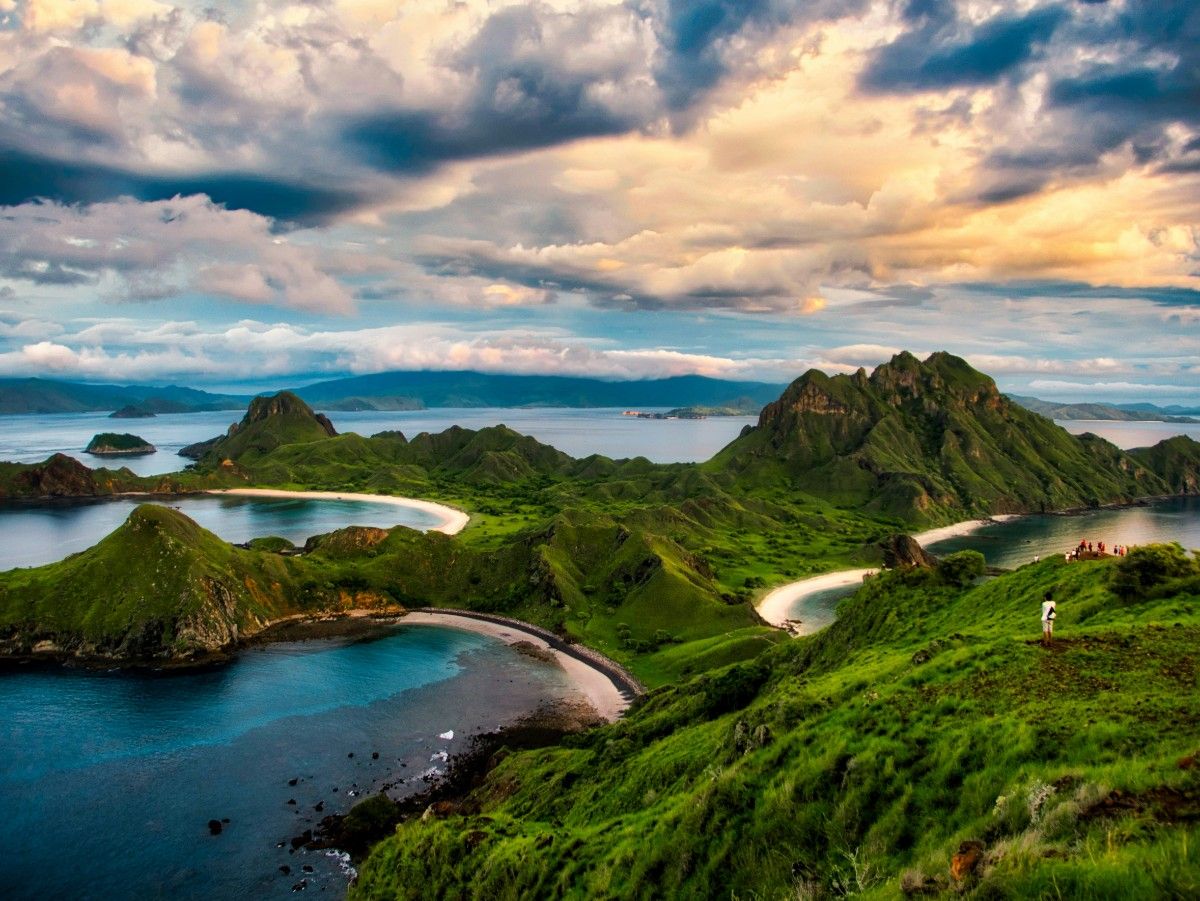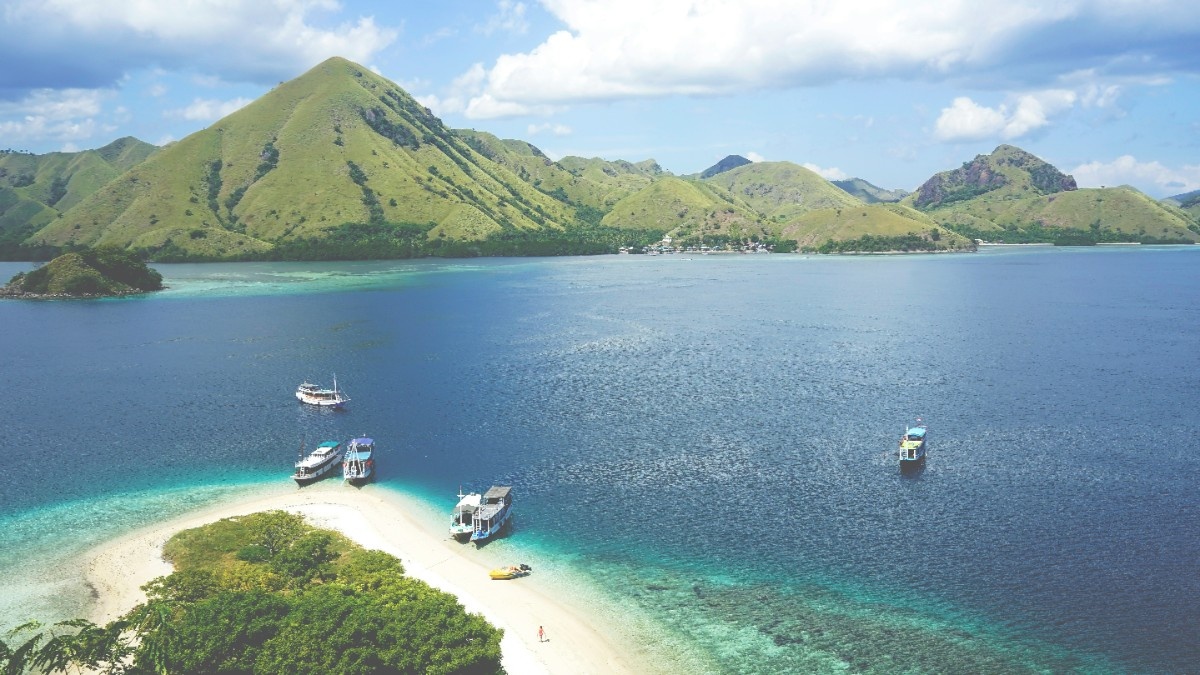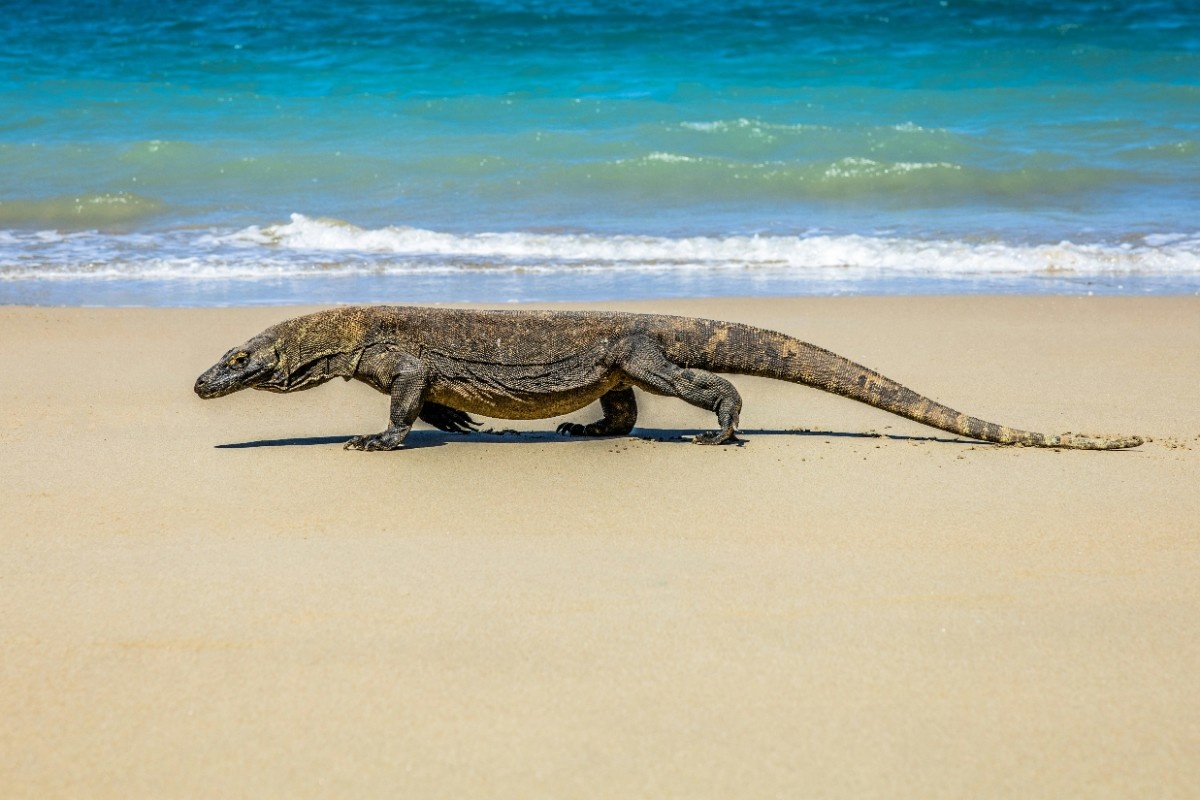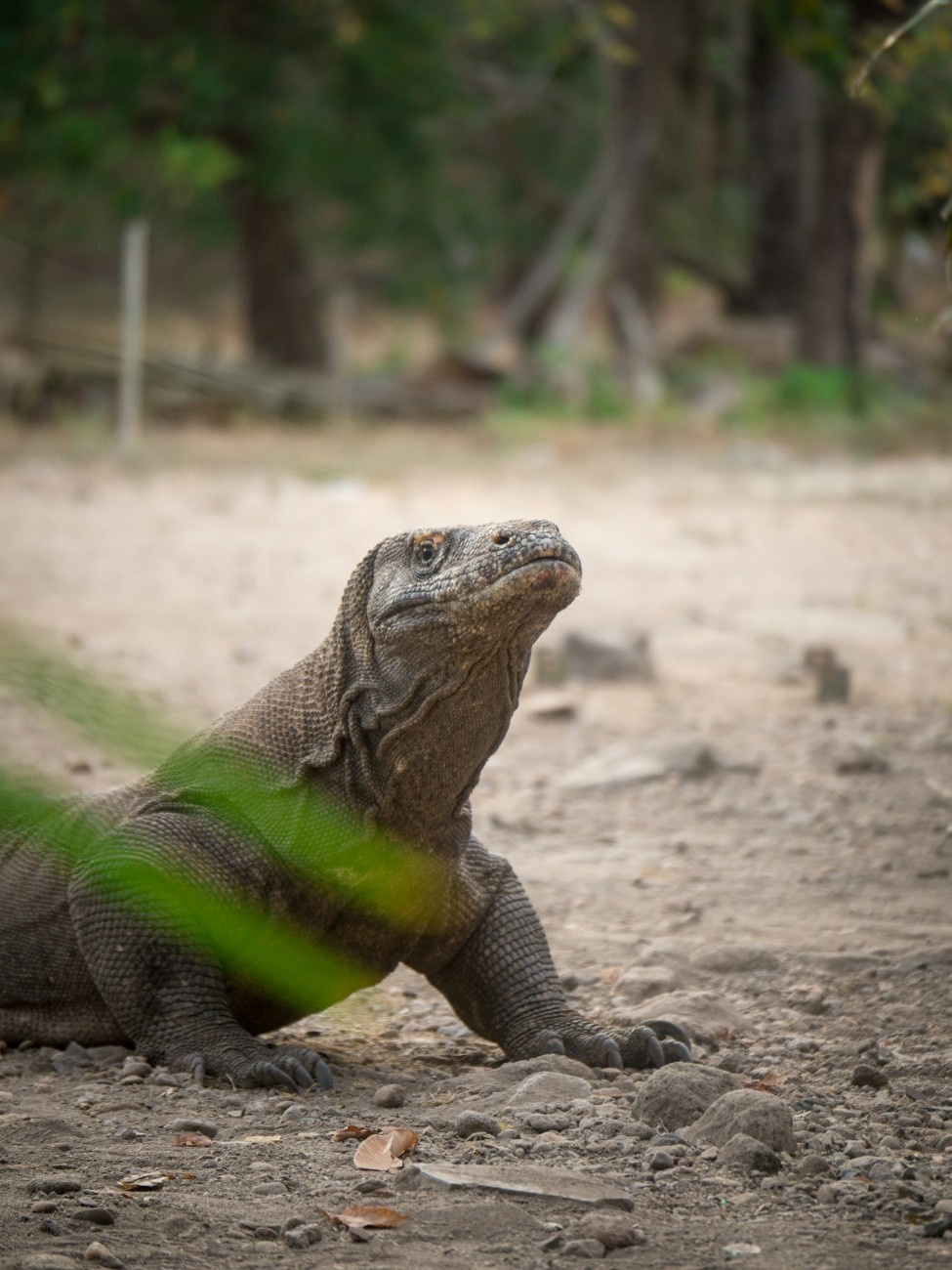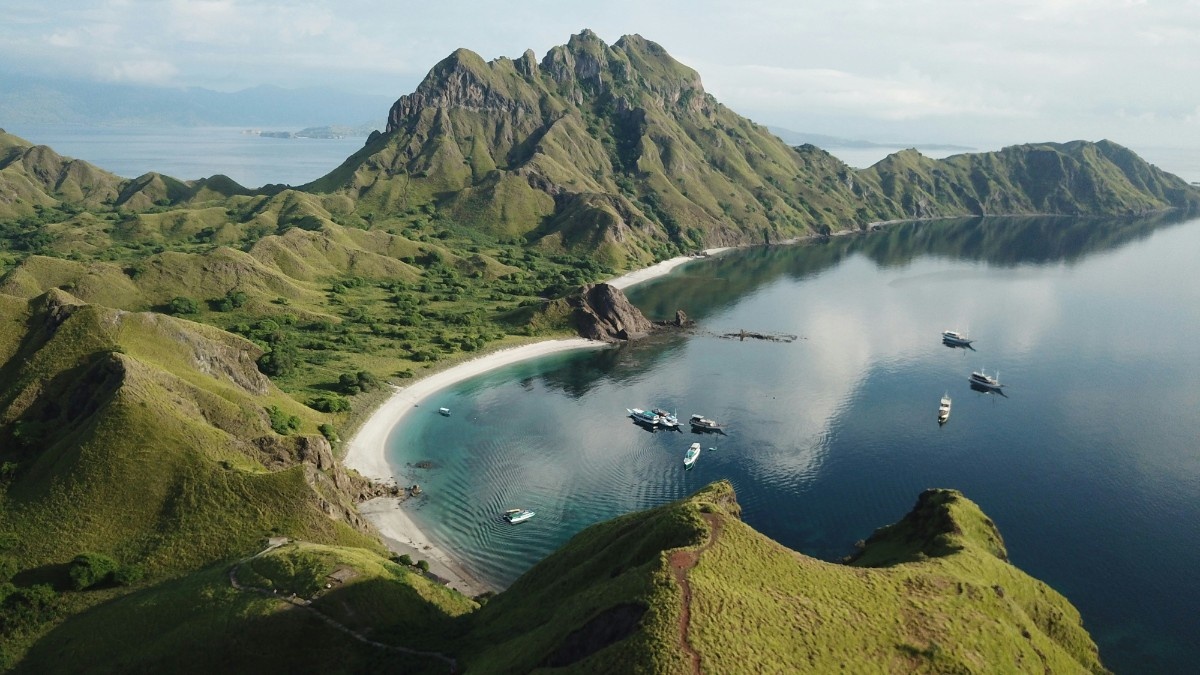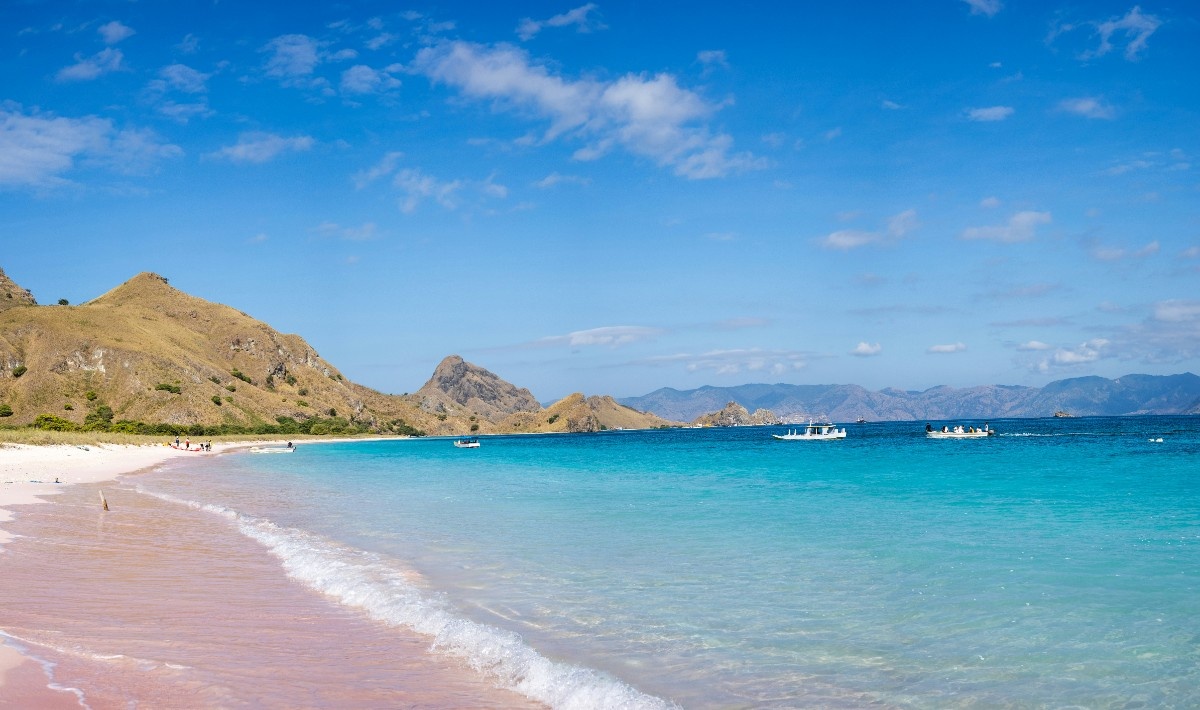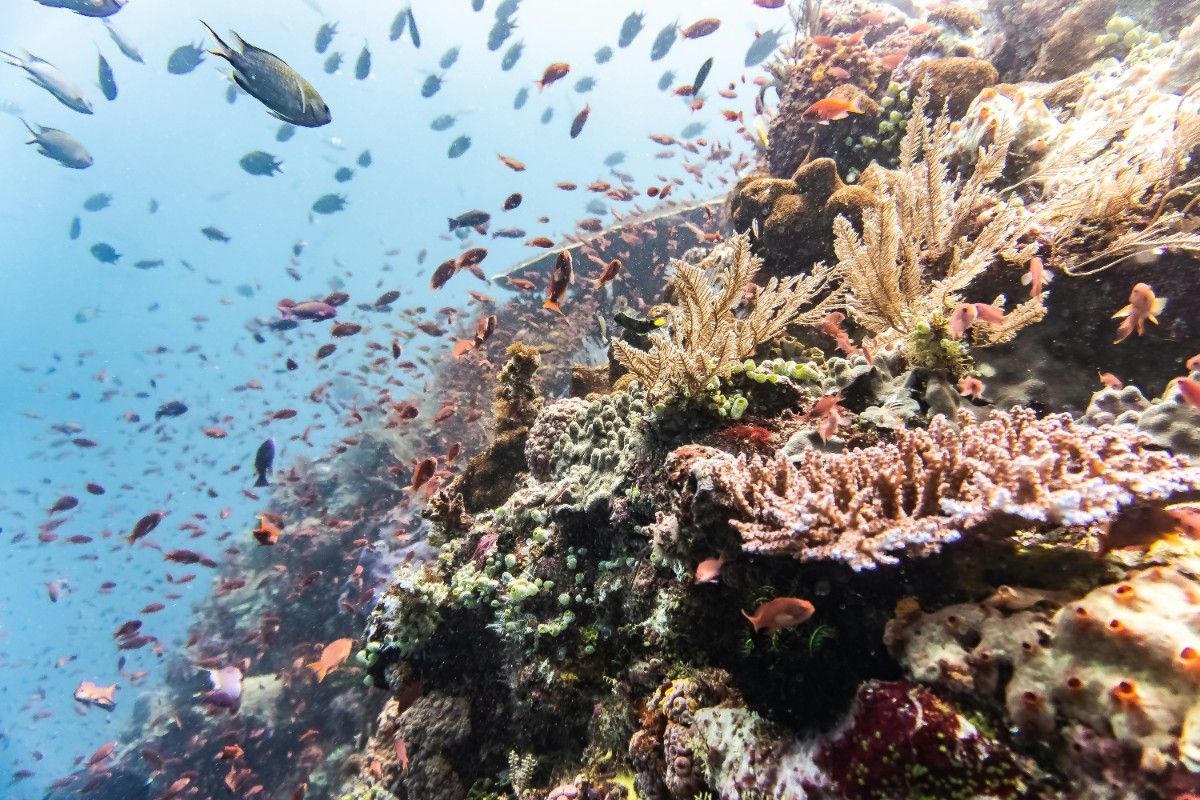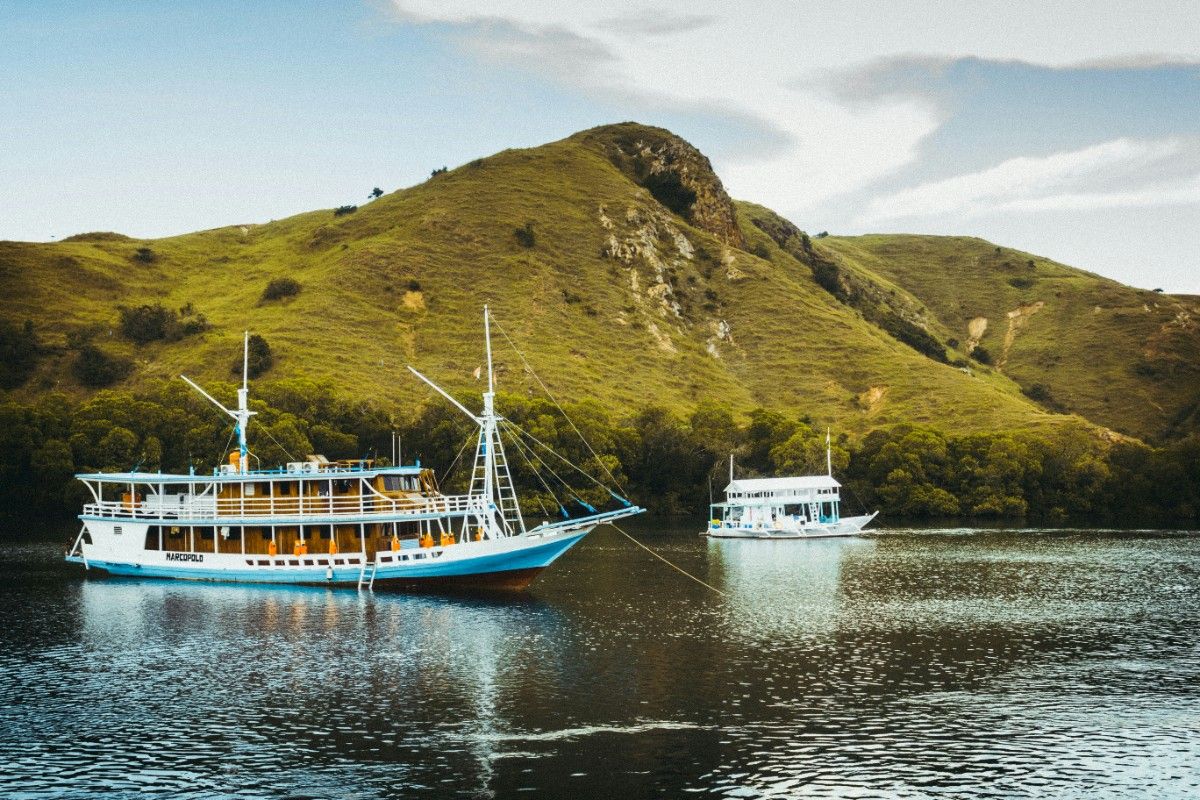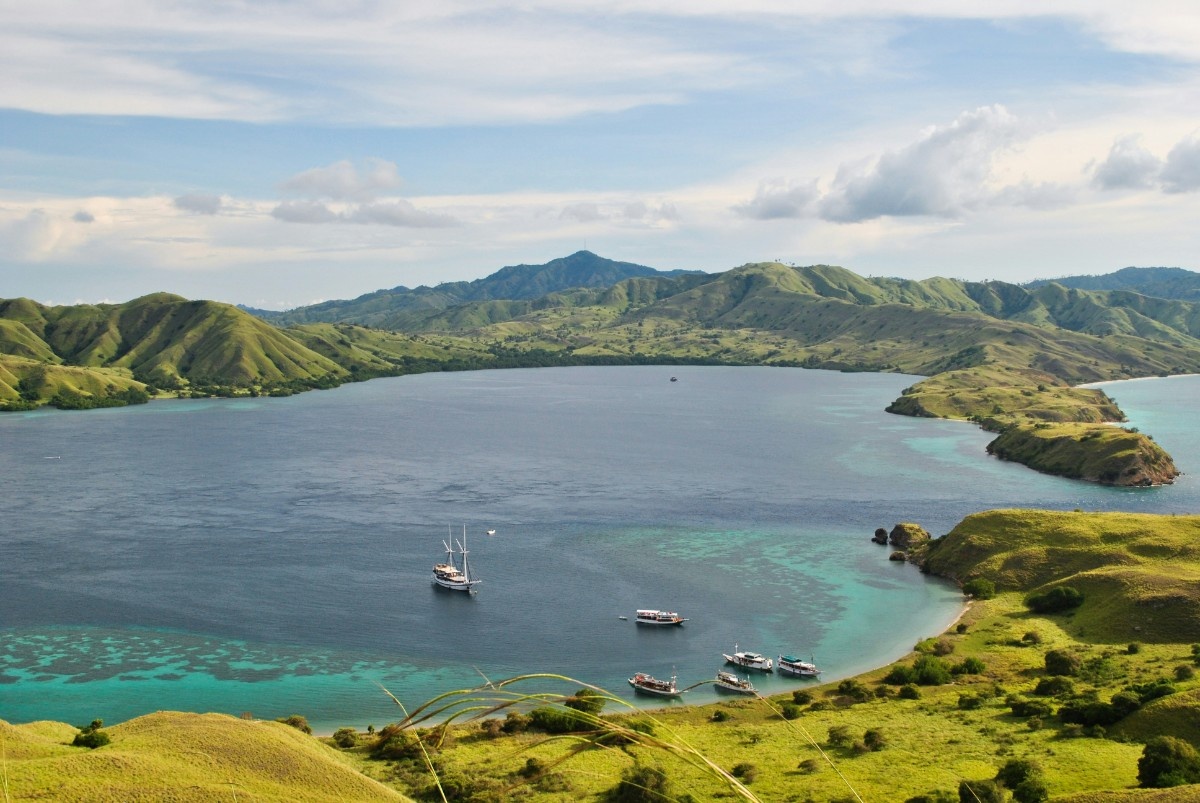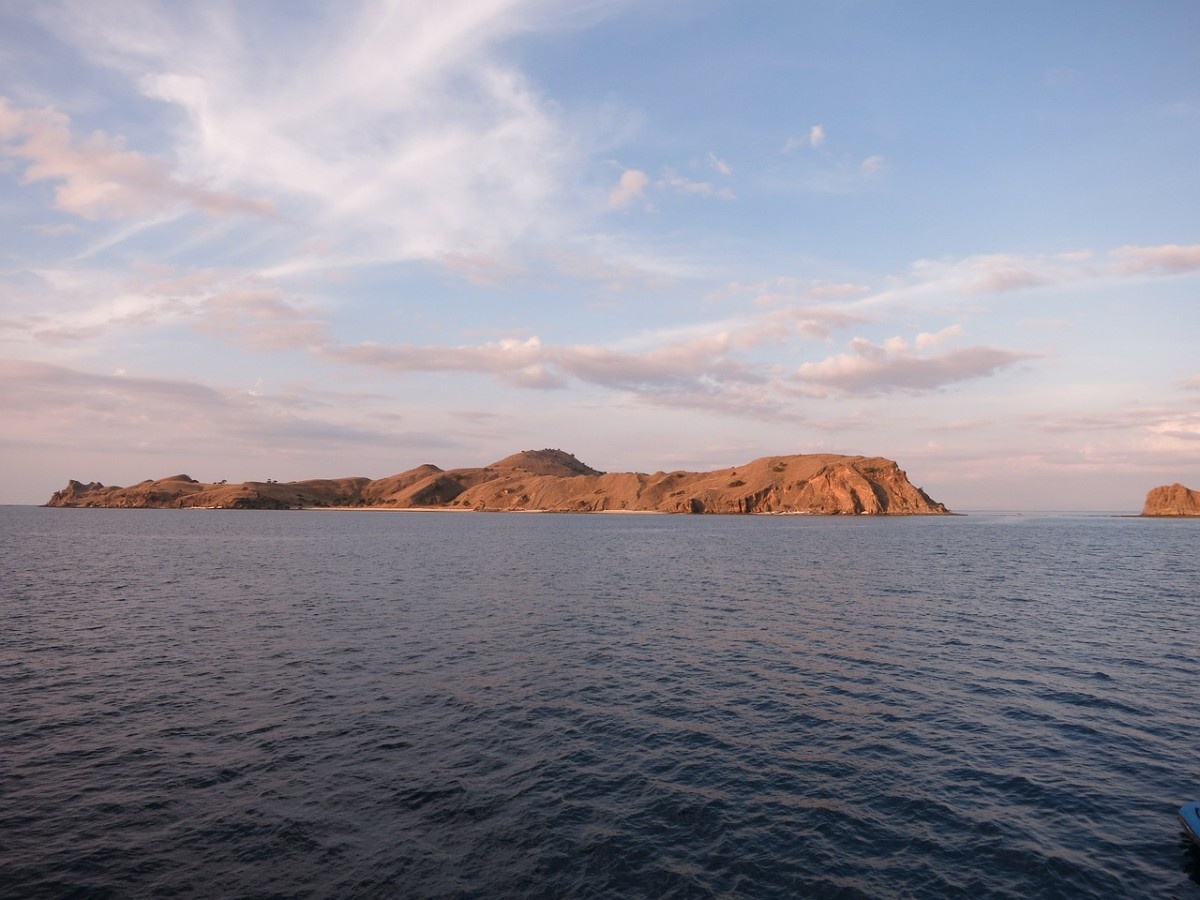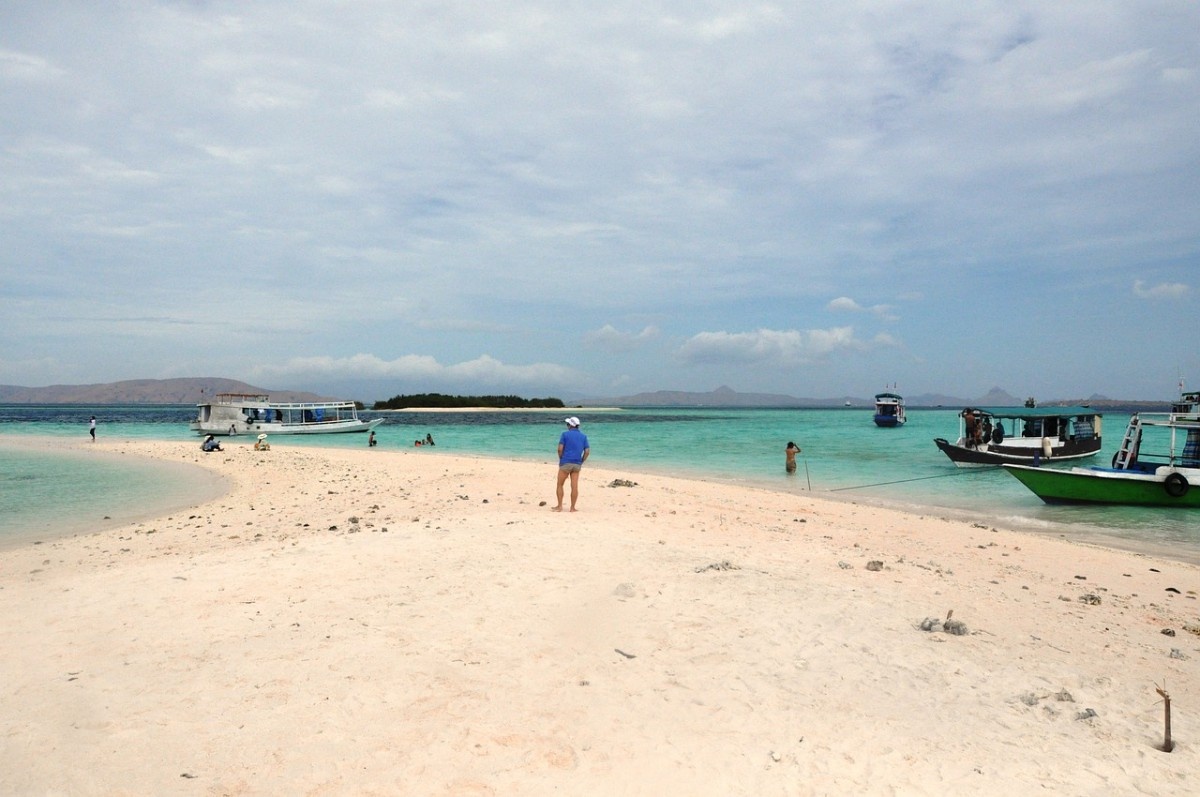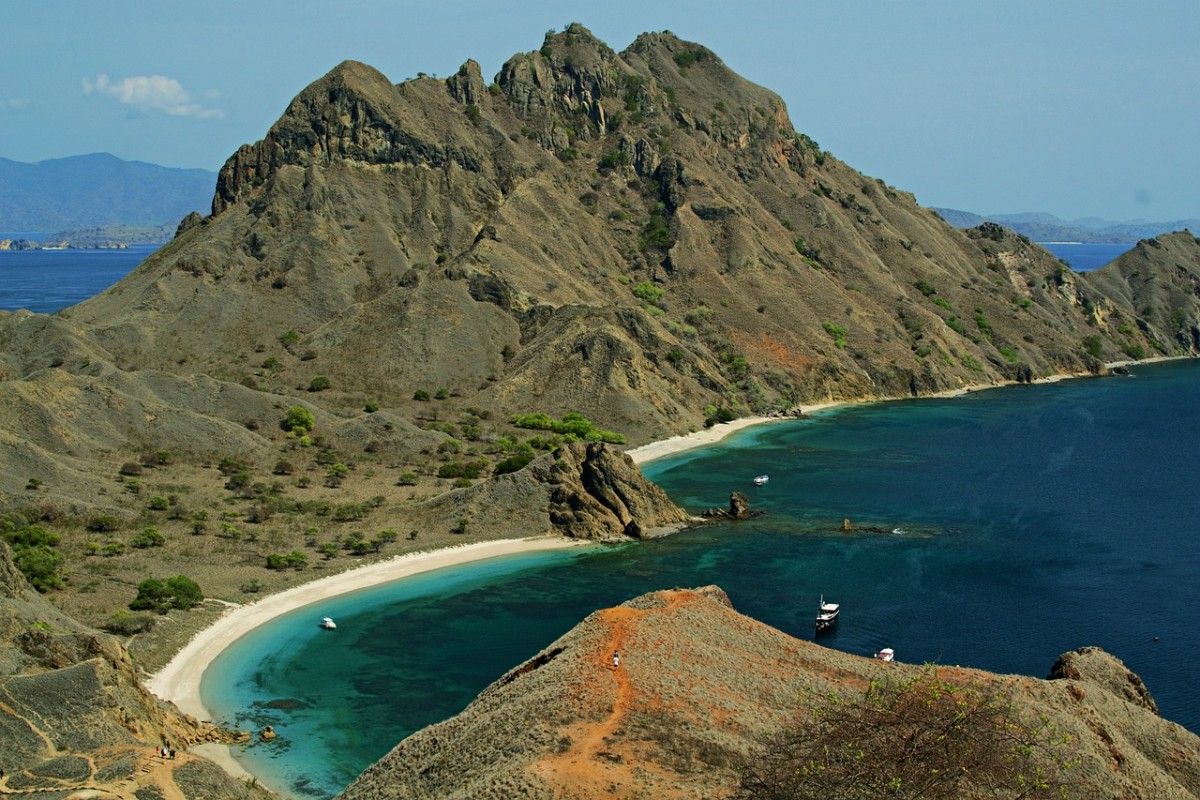Komodo National Park: A Journey Through East Nusa Tenggara, Indonesia
Introduction to Komodo National Park
A UNESCO World Heritage Site
Komodo National Park, located in East Nusa Tenggara, Indonesia, is a UNESCO World Heritage Site and one of the most remarkable natural wonders on Earth. Established in 1980, this breathtaking park spans an area of 1,733 square kilometres, encompassing three main islands—Komodo, Padar, and Rinca—along with numerous smaller islands. The park's primary goal is to protect the iconic Komodo dragon and its habitat, but it has since become a sanctuary for an incredible array of terrestrial and marine life.
The park's unique location at the confluence of the Indian and Pacific Oceans has given rise to an exceptional diversity of flora and fauna. With over 1,000 species of fish, 260 species of reef-building corals, and a wealth of other marine organisms, Komodo National Park is a haven for marine biodiversity. On land, the park supports a variety of ecosystems, including dry savanna, tropical forests, and mangrove swamps, each harbouring its own distinct communities of plants and animals.
A Natural Wonder Attracting Visitors Worldwide
The rugged landscapes, pristine beaches, and crystal-clear waters of Komodo National Park attract visitors from around the globe, offering an unparalleled experience for nature enthusiasts, adventurers, and wildlife lovers alike. The park's stunning natural beauty, coupled with its remarkable biodiversity, has firmly established it as one of Indonesia's most treasured natural assets and a must-visit destination for travellers seeking an unforgettable adventure.
Visitors to Komodo National Park can explore the islands' rugged terrain, hike through scenic trails, and encounter the iconic Komodo dragons in their natural habitat. The park's waters offer exceptional snorkelling and diving opportunities, with vibrant coral reefs and a plethora of marine life to discover. From the famous Pink Beach to the secluded coves and mangrove forests, the park's landscapes are diverse and captivating.
Conservation and Sustainable Tourism
In addition to its natural wonders, Komodo National Park is also a model for conservation and sustainable tourism practices. The park's management is a collaborative effort between the Indonesian government, local communities, and various conservation organisations, all working together to ensure the long-term sustainability of this unique and fragile environment.
By promoting responsible tourism and supporting conservation efforts, Komodo National Park is working to safeguard the future of its extraordinary biodiversity and the communities that depend on it. Visitors are encouraged to be mindful of their environmental impact, respect local customs and regulations, and contribute to the park's conservation initiatives.
A journey to Komodo National Park is an opportunity to immerse oneself in the raw beauty of nature, learn about the importance of conservation, and create lasting memories in one of the world's most spectacular natural settings. As you embark on your adventure through this incredible Indonesian national park, prepare to be awestruck by the wonders that await you.
The Iconic Komodo Dragon
The World's Largest Lizard
The undisputed star of Komodo National Park is the Komodo dragon (Varanus komodoensis), the world's largest living lizard. These magnificent creatures, which can grow up to 3 metres in length and weigh up to 70 kilograms, are found nowhere else on Earth. Komodo dragons are apex predators, occupying the top of the food chain in their native habitat.
Known for their powerful jaws, venomous bite, and acute sense of smell, Komodo dragons are formidable hunters. They use their keen senses to track down prey such as deer, water buffalo, and wild boar, and their powerful bodies and sharp claws to take down even large animals. Despite their fearsome reputation, Komodo dragons are also known to scavenge for food and can survive on just a few meals a year.
Ancient Reptiles Fascinating Science
Komodo dragons have fascinated scientists and the public alike since their discovery by Western scientists in 1910. These ancient lizards have existed for millions of years, surviving numerous environmental changes and challenges. Their unique physiology and behaviour have been the subject of extensive research, revealing fascinating insights into their biology and ecology.
One of the most intriguing aspects of Komodo dragons is their venomous bite. For many years, scientists believed that the dragons' mouths harboured toxic bacteria that caused sepsis in their prey. However, recent studies have shown that Komodo dragons actually possess venom glands that deliver a potent cocktail of toxins, causing blood loss, shock, and paralysis in their victims.
Conservation and Protection
Today, Komodo dragons are classified as a vulnerable species due to habitat loss, human encroachment, and illegal hunting. Komodo National Park plays a crucial role in protecting these magnificent creatures and ensuring their survival for generations to come. The park's rangers and conservation staff work tirelessly to monitor Komodo dragon populations, protect their habitat, and educate visitors about the importance of conservation.
Visitors to Komodo National Park have the opportunity to observe Komodo dragons in their natural habitat, guided by experienced park rangers who are well-versed in the lizards' behaviour and ecology. Watching a Komodo dragon hunt, bask in the sun, or interact with other members of its species is an awe-inspiring experience that highlights the raw power and beauty of nature.
Respecting and Coexisting with Komodo Dragons
While the opportunity to see Komodo dragons up close is a major draw for visitors to Komodo National Park, it is crucial to remember that these are wild animals and should be treated with respect and caution. Visitors must always be accompanied by trained park rangers and follow their instructions carefully to ensure the safety of both the dragons and themselves.
By promoting responsible tourism and supporting conservation efforts, we can help protect the Komodo dragons and their unique island home. Through education, research, and sustainable practices, Komodo National Park is working to foster a harmonious coexistence between humans and these extraordinary creatures, ensuring that future generations will have the chance to marvel at their beauty and importance in the natural world.
Exploring the Islands: Komodo, Padar, and Rinca
Komodo Island: Home of the Dragons
Komodo Island, the largest of the three main islands in Komodo National Park, is the premier destination for those seeking to encounter the legendary Komodo dragons. This rugged island, with its rolling hills, dry savannas, and patches of dense forest, is home to the majority of the park's dragon population.
Visitors to Komodo Island can embark on guided treks through the island's interior, led by experienced park rangers. These treks offer the chance to observe Komodo dragons in their natural habitat, as well as other fascinating wildlife such as Timor deer, water buffalo, and a variety of bird species. The island's rugged terrain and stunning landscapes provide a breathtaking backdrop for this unforgettable wildlife experience.
In addition to the Komodo dragons, Komodo Island also boasts a rich cultural heritage. The Komodo village, located on the island's eastern coast, is home to the Komodo people, who have lived in harmony with the dragons for generations. Visitors can learn about the unique customs and traditions of the Komodo people, and gain insight into their daily lives and relationship with the natural world.
Padar Island: A Hiker's Paradise
Padar Island, situated between Komodo and Rinca islands, is a haven for hiking enthusiasts and nature lovers. The island's most iconic feature is its tri-coloured beaches, with stretches of white, pink, and black sand creating a stunning visual contrast against the turquoise waters of the surrounding sea.
Hikers can challenge themselves by ascending to Padar Island's highest point, a trek that rewards with breathtaking panoramic views of the island's unique landscape and the scattered islands of Komodo National Park. The hike, while demanding, is well worth the effort, as the vistas from the summit are truly unparalleled.
Padar Island's rugged terrain is not only aesthetically captivating but also supports a diverse array of flora and fauna. The island is home to several endemic species, including the Komodo dragon, as well as a variety of bird species and reptiles. Exploring Padar Island on foot allows visitors to fully immerse themselves in this unique and pristine environment.
Rinca Island: A Showcase of Biodiversity
Rinca Island, the smallest of the three main islands in Komodo National Park, offers visitors another exceptional opportunity to observe Komodo dragons in the wild. Like Komodo Island, Rinca's landscape is characterised by dry savannas, dense forests, and mangrove swamps, each supporting a distinct array of wildlife.
Guided walks on Rinca Island lead visitors through the island's diverse habitats, offering encounters with not only Komodo dragons but also other fascinating creatures such as monkeys, wild boar, and numerous bird species. The island's network of walking trails and the knowledgeable park rangers make exploring Rinca Island both informative and enjoyable.
In addition to its terrestrial wonders, Rinca Island also boasts stunning coastal areas and vibrant marine life. Visitors can explore the island's mangrove forests, home to a variety of fish and crustacean species, or snorkel in the crystal-clear waters surrounding the island to discover the colourful coral reefs and their inhabitants.
Rinca Island is also home to a park ranger station, where visitors can learn about the ongoing conservation efforts in Komodo National Park. The station provides insights into the research, monitoring, and protection initiatives that are crucial to preserving this unique ecosystem and its iconic species for generations to come.
The Enchanting Pink Beach
A Natural Wonder
One of the most remarkable and sought-after destinations within Komodo National Park is the enchanting Pink Beach, located on Komodo Island. This stunning stretch of coastline is famous for its unique pink-hued sand, which creates a surreal and mesmerising landscape that captivates visitors from around the world.
The distinctive colour of Pink Beach is the result of a fascinating natural phenomenon. The beach's soft pink sand is created by the presence of microscopic red organisms called Foraminifera, which inhabit the coral reefs offshore. When these tiny creatures die, their red shells are washed ashore and mixed with the white coral sand, resulting in the beach's characteristic pink hue.
A Snorkeler's Paradise
In addition to its striking visual appeal, Pink Beach is also renowned for its exceptional snorkelling and diving opportunities. The crystal-clear waters surrounding the beach are teeming with vibrant marine life, making it a paradise for underwater enthusiasts.
Snorkelers can explore the shallow waters near the shore, marvelling at the colourful fish, sea turtles, and intricate coral formations that thrive in this pristine environment. The reef's proximity to the beach makes it easily accessible for swimmers of all skill levels, allowing everyone to experience the wonders of Komodo National Park's marine ecosystem.
For those seeking a more immersive experience, scuba diving at Pink Beach reveals an even greater diversity of aquatic life. The deeper waters are home to a plethora of fish species, as well as larger creatures such as reef sharks, rays, and occasional dolphins. The vibrant coral gardens and underwater topography create a stunning backdrop for an unforgettable diving adventure.
Cultural Significance and Serenity
Beyond its natural beauty and underwater wonders, Pink Beach also holds cultural significance for the local Manggarai people. The beach is considered a sacred site, and traditional ceremonies are performed here throughout the year. Visitors to Pink Beach are encouraged to be respectful of local customs and beliefs, ensuring that this special place remains a harmonious blend of nature and culture.
The serene atmosphere of Pink Beach makes it an ideal spot for relaxation and contemplation. Visitors can spend hours lounging on the soft pink sand, soaking up the sun, and listening to the gentle lapping of the waves against the shore. The beach's secluded location and limited accessibility help maintain its tranquil ambience, allowing visitors to truly disconnect from the stresses of modern life and immerse themselves in the beauty of their surroundings.
Preserving a Natural Treasure
As with all of Komodo National Park's wonders, Pink Beach's beauty and ecological significance depend on ongoing conservation efforts and responsible tourism practices. Visitors to the beach are encouraged to minimise their environmental impact by properly disposing of waste, avoiding damage to the coral reefs, and respecting the delicate balance of the ecosystem.
By promoting awareness and supporting sustainable tourism initiatives, Komodo National Park aims to preserve the enchanting Pink Beach and its surrounding marine habitats for future generations. Through responsible stewardship and a shared appreciation for this extraordinary place, we can ensure that the captivating beauty of Pink Beach continues to inspire and delight visitors for years to come.
Marine Life and Water Activities
Diverse Underwater Ecosystems
Komodo National Park is not only a sanctuary for terrestrial wildlife but also a haven for an astonishing diversity of marine life. The park's waters, located at the confluence of the Indian and Pacific Oceans, support a wide range of underwater ecosystems, from shallow coral reefs to deep-sea trenches.
The park's thriving coral reefs are home to over 260 species of reef-building corals, creating a vibrant and complex underwater landscape. These reefs provide shelter and sustenance for an incredible array of marine organisms, including more than 1,000 species of fish, as well as numerous species of molluscs, crustaceans, and echinoderms.
In addition to the coral reefs, Komodo National Park's waters also support seagrass beds and mangrove forests, each playing a crucial role in the overall health and productivity of the marine ecosystem. These habitats serve as nurseries for juvenile fish and other marine life, while also providing essential nutrients and protection from predators.
Snorkelling Adventures
One of the most popular and accessible ways to explore the wonders of Komodo National Park's marine life is through snorkelling. With crystal-clear waters and an abundance of shallow coral reefs, the park offers unparalleled opportunities for snorkellers of all skill levels.
Visitors can explore numerous snorkelling sites throughout the park, each offering its own unique combination of coral formations, fish species, and underwater landscapes. Popular spots include Pink Beach on Komodo Island, Kanawa Island, and Siaba Island, all of which are known for their vibrant reefs and diverse marine life.
Snorkellers can expect to encounter a kaleidoscope of colourful fish, including angelfish, butterflyfish, parrotfish, and clownfish, as well as larger species such as groupers, snappers, and trevallies. With luck, snorkellers may also spot sea turtles, reef sharks, and even the occasional dugong or dolphin.
World-Class Diving Destinations
For those seeking a more immersive and challenging underwater experience, Komodo National Park is home to some of the world's most renowned dive sites. The park's unique oceanographic conditions, including strong currents and upwellings, have created an environment that supports an exceptional diversity of marine life.
Notable dive sites within the park include Batu Bolong, known for its stunning coral formations and abundant fish life; Manta Point, where divers can encounter graceful manta rays; and Castle Rock, a underwater pinnacle that attracts large pelagic species such as tuna, barracuda, and the occasional whale shark.
Diving in Komodo National Park is suitable for experienced divers comfortable with strong currents and varying water conditions. The park's dive sites offer the chance to explore deep walls, coral gardens, and open water environments, each presenting its own unique challenges and rewards.
Eco-Friendly Water Activities
In addition to snorkelling and diving, Komodo National Park offers a range of other water-based activities that allow visitors to explore and appreciate the beauty of the park's marine environments. These include kayaking, stand-up paddleboarding, and island-hopping tours.
Kayaking and paddleboarding provide a peaceful and low-impact way to discover the park's secluded bays, mangrove forests, and coastal landscapes. These activities offer a chance to observe marine life from the surface, such as schools of fish, sea turtles, and even the occasional pod of dolphins.
Island-hopping tours, often conducted by traditional wooden boats called "klotok," allow visitors to explore the park's many islands and coastal areas, combining water-based activities with wildlife observations and visits to local communities.
By engaging in these eco-friendly water activities, visitors can gain a deeper appreciation for the interconnectedness of Komodo National Park's terrestrial and marine environments, and the importance of preserving these fragile ecosystems for generations to come.
Conservation and Sustainability
Protecting a Unique Ecosystem
Komodo National Park is more than just a natural wonder; it is a vital conservation area that plays a crucial role in protecting the unique ecosystems and species found within its boundaries. Established in 1980 to safeguard the iconic Komodo dragon and its habitat, the park has since expanded its conservation efforts to encompass the entire landscape, including its rich marine environments.
The park's management is a collaborative effort involving the Indonesian government, local communities, and various conservation organisations. These stakeholders work together to address the complex challenges facing the park, such as balancing tourism development with environmental protection, mitigating the impacts of climate change, and ensuring the long-term sustainability of the park's resources.
Community Engagement and Empowerment
One of the key strategies employed by Komodo National Park in its conservation efforts is the engagement and empowerment of local communities. The park recognises that the success of its conservation initiatives depends on the active participation and support of the people who live within and around its boundaries.
To this end, the park works closely with local communities to develop sustainable livelihoods that are compatible with conservation goals. This includes promoting eco-tourism activities, such as guided treks and village visits, which provide economic opportunities for local people while also fostering a sense of pride and stewardship in the park's natural and cultural heritage.
The park also invests in education and capacity-building programs that equip local communities with the knowledge and skills necessary to actively participate in conservation efforts. By empowering local people to become conservation leaders and advocates, Komodo National Park is building a strong foundation for long-term sustainability and resilience.
Scientific Research and Adaptive Management
Another critical aspect of conservation in Komodo National Park is the ongoing scientific research and monitoring of its ecosystems and species. The park serves as a living laboratory for scientists from around the world, who come to study its unique biodiversity and ecological processes.
This research provides valuable insights into the health and dynamics of the park's ecosystems, informing management decisions and conservation strategies. By adopting an adaptive management approach, the park can respond to new information and changing conditions, ensuring that its conservation efforts remain effective and relevant.
Research projects in Komodo National Park cover a wide range of topics, from the behaviour and ecology of Komodo dragons to the impacts of climate change on coral reefs. This scientific knowledge not only benefits the park itself but also contributes to our broader understanding of tropical ecosystems and the challenges they face in an increasingly changing world.
Sustainable Tourism and Visitor Engagement
As a world-renowned tourist destination, Komodo National Park recognises the importance of sustainable tourism in supporting its conservation efforts. By attracting visitors from around the globe, the park generates revenue that can be reinvested in conservation initiatives, while also raising awareness about the importance of protecting its unique natural and cultural heritage.
To ensure that tourism activities are compatible with conservation goals, the park has implemented a range of sustainable tourism practices. These include limiting visitor numbers to minimise environmental impacts, requiring guides for all tours to ensure responsible behaviour, and promoting eco-friendly accommodations and transport options.
The park also actively engages visitors in its conservation efforts, encouraging them to become advocates for the protection of Komodo National Park and its wildlife. Through interpretive programs, guided activities, and educational materials, the park fosters a sense of connection and responsibility among its visitors, inspiring them to support conservation efforts both within the park and beyond its boundaries.
By embracing a holistic approach to conservation that encompasses community engagement, scientific research, sustainable tourism, and visitor education, Komodo National Park is working to ensure a future in which its extraordinary biodiversity and cultural heritage continue to thrive, inspiring and enriching the lives of generations to come.
Getting to Komodo National Park
Labuan Bajo: The Gateway to Komodo
The journey to Komodo National Park begins in Labuan Bajo, a small fishing town located on the western tip of Flores Island in East Nusa Tenggara, Indonesia. This charming town has become the primary gateway for visitors seeking to explore the wonders of Komodo National Park and its surrounding islands.
Labuan Bajo has its own airport, with regular flights connecting it to major Indonesian cities such as Bali, Jakarta, and Surabaya. The flight from Bali to Labuan Bajo takes approximately one hour, making it the most convenient and popular route for visitors coming from the famous Indonesian island.
Upon arrival in Labuan Bajo, visitors will find a range of accommodations, from budget-friendly guesthouses to luxury resorts, catering to different preferences and budgets. The town also offers a variety of dining options, with local warungs serving traditional Indonesian cuisine alongside international restaurants and cafes.
Boat Tours and Liveaboards
From Labuan Bajo, visitors can embark on boat tours to explore the islands and attractions of Komodo National Park. Local tour operators offer a wide range of options, from day trips to multi-day liveaboard experiences, allowing visitors to customise their adventure based on their interests and time constraints.
Day trips typically include visits to iconic sites such as Komodo Island, Rinca Island, and Pink Beach, with opportunities for trekking, snorkelling, and wildlife spotting. These tours usually depart early in the morning and return to Labuan Bajo by late afternoon, making them ideal for those with limited time or budget.
For a more immersive experience, liveaboard boat tours offer the chance to explore Komodo National Park over several days, with accommodation and meals provided onboard. These tours allow visitors to venture further into the park, visiting remote islands and dive sites that are inaccessible on day trips. Liveaboards cater to various interests, from diving and snorkelling to wildlife observation and photography.
Overland Adventures from Bali
For those seeking a more adventurous and off-the-beaten-path journey from Bali to Komodo National Park, an overland trip through Lombok and Sumbawa islands is an exciting alternative. This route involves a combination of ferry rides and overland transport, allowing visitors to explore the stunning landscapes and cultural attractions of these lesser-known Indonesian islands.
From Bali, travellers can take a ferry to Lombok, where they can explore the island's beautiful beaches, lush forests, and traditional villages. From there, they can continue by ferry to Sumbawa, an island known for its rugged coastlines, mountains, and savanna landscapes.
Overland transport across Sumbawa leads to the port town of Sape, where travellers can catch a final ferry to Labuan Bajo. While this journey is more time-consuming than a direct flight, taking around 3-4 days, it offers a unique opportunity to experience the diversity and beauty of the Indonesian archipelago.
Tips for a Smooth Journey
Regardless of the chosen route, planning ahead is key to ensuring a smooth and enjoyable journey to Komodo National Park. Visitors should book their flights or ferry tickets well in advance, especially during peak travel seasons, to secure their preferred dates and avoid last-minute complications.
When packing for the trip, visitors should consider the park's tropical climate and the activities they plan to engage in. Light, breathable clothing, comfortable walking shoes, and sun protection are essential, as well as any specialised gear for snorkelling, diving, or photography.
It is also important to be aware of the park's regulations and to respect local customs and the environment. Visitors should always follow the guidance of their tour operators and park rangers, and be mindful of their impact on the delicate ecosystems and communities within Komodo National Park.
By carefully planning their journey and embracing a responsible and open-minded approach, visitors to Komodo National Park can set the stage for an unforgettable adventure, filled with natural wonders, cultural exchanges, and life-changing experiences.
Unforgettable Experiences and Lasting Impressions
Close Encounters with Komodo Dragons
One of the most thrilling and memorable experiences in Komodo National Park is the opportunity to observe the legendary Komodo dragons in their natural habitat. Encountering these ancient and formidable creatures up close is a humbling and awe-inspiring moment that stays with visitors long after they leave the park.
Guided treks on Komodo and Rinca islands offer the best chances of spotting Komodo dragons in the wild. As visitors walk through the rugged landscapes, accompanied by knowledgeable park rangers, they may witness these powerful predators lounging in the sun, stalking prey, or engaging in territorial displays.
Each encounter with a Komodo dragon is unique, offering a glimpse into the raw power and beauty of nature. Whether it's watching a large male assert its dominance or observing a group of juveniles playfully wrestling, these moments serve as reminders of the incredible diversity and resilience of life on Earth.
Snorkelling and Diving in a Coral Paradise
For many visitors, the colourful and vibrant underwater world of Komodo National Park leaves a lasting impression that rivals even the thrill of seeing Komodo dragons. The park's crystal-clear waters and pristine coral reefs offer some of the best snorkelling and diving experiences in the world, with an astonishing diversity of marine life to discover.
Snorkelling in the shallows of Pink Beach or the reefs surrounding the park's islands, visitors are immersed in a kaleidoscope of colour, as schools of tropical fish dart past and intricate coral formations stretch out before them. Encounters with sea turtles, reef sharks, and even the occasional manta ray or whale shark create indelible memories and a profound appreciation for the wonders of the ocean.
For divers, Komodo National Park offers an unparalleled array of experiences, from drifting along thriving coral walls to exploring deep sea mounts and channels. The park's unique geography and nutrient-rich waters support an incredible diversity of marine species, making each dive a journey of discovery and amazement.
Hiking and Photography in Stunning Landscapes
Beyond its wildlife and marine attractions, Komodo National Park also leaves a lasting impression through its breathtaking landscapes and scenic vistas. From the rugged hills and savannas of Komodo Island to the tri-coloured beaches and panoramic viewpoints of Padar Island, the park offers countless opportunities for hiking, exploration, and photography.
As visitors trek through the park's varied terrains, they are treated to sweeping views of turquoise bays, jagged coastlines, and distant volcanic peaks. The changing light and colours of the landscape throughout the day create a dynamic and enchanting backdrop, inviting visitors to capture the beauty of the park through their lenses.
For photography enthusiasts, Komodo National Park is a dream destination, offering endless subjects and compositions to explore. From close-up shots of exotic wildlife to wide-angle landscapes and stunning sunsets, the park provides a wealth of inspiration and opportunities to create memorable and striking images.
Connecting with Nature and Culture
Perhaps the most lasting impact of a visit to Komodo National Park is the sense of connection and appreciation it fosters for the natural world and the diverse cultures that inhabit it. Through encounters with the park's remarkable wildlife, interactions with local communities, and immersion in its stunning landscapes, visitors gain a deeper understanding of the interconnectedness of all living things and the importance of preserving these precious ecosystems.
The experience of exploring Komodo National Park also serves as a reminder of the incredible diversity and resilience of Indonesian culture, as well as the challenges and opportunities faced by communities living in close proximity to nature. By engaging with local guides, participating in cultural activities, and supporting sustainable tourism initiatives, visitors can contribute to the long-term well-being of both the park and its people.
Ultimately, a journey through Komodo National Park leaves an indelible mark on the hearts and minds of those who experience it. The memories of its extraordinary wildlife, stunning landscapes, and warm-hearted people remain vivid long after the trip has ended, inspiring a lifelong commitment to conservation, cultural understanding, and the pursuit of adventure in the natural world.
Related Articles

Let us know you agree to cookies
We use marketing, analytical and functional cookies as well as similar technologies to give you the best experience. Third parties, including social media platforms, often place tracking cookies on our site to show you personalised adverts outside of our website.
We store your cookie preferences for two years and you can edit your preferences via ‘manage cookies’ or through the cookie policy at the bottom of every page. For more information, please see our cookie policy.
